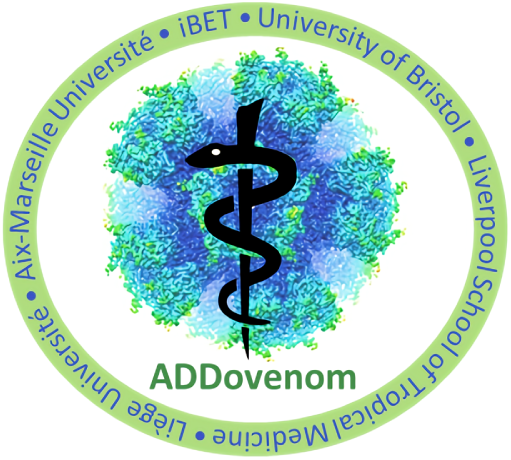For our Researcher Spotlight features, we interview members of the ADDovenom research team, to find out about their interests, their contributions to the project, and their hopes for the future of venom research.
Here, we speak with Fernanda Amorim, a Post-Doctoral Researcher at the Mass Spectrometry Laboratory, University of Liège.
Can you tell us briefly about your own research interests and background?
I am a pharmacist-biochemist with a Master’s degree in biotechnology (UFES, Brazil), and a PhD in sciences (USP, Brazil). Since 2011, I’ve been working with the characterization of bioactive molecules from natural sources. I have worked with several species of animals, plants and foods related to this subject, but studying venoms is definitely what interests me the most.
When did you first become interested in venom research?
My first experience of working with venoms (the Tityus serrulatus scorpion) was in 2011, when I did my PhD at USP (Brazil) with Prof. Dr. Eliane Arantes. Toxinology is a rich research field where we can apply different techniques, and this has definitely helped me during my scientific career. I have studied venoms from at least 30 different venomous animals, including snakes, scorpions, ants and spiders, in order to perform venom characterization, purification, omics approaches and heterologous expression.
What are your key responsibilities in the ADDovenom project?
As part of the team at the Laboratory of Mass Spectrometry at University of Liège, we are responsible for the identification and characterization of the toxins present in Echis and Dendroaspis venoms in order to create a database of the most potent toxins for the ADDomers design. We will also perform the quality control by mass spectrometry for the recombinant toxins/ADDomers. In parallel, we are developing a new methodology of antivenomics that will be applied in the evaluation of the antivenom efficacy.
What do you hope will be the main outputs from your work on ADDovenom?
I hope to be able to create an accurate database that will be able to guide our collaborators in the development of ADDomers. Also, our next generation of antivenomics will be very innovative for the evaluation of the efficacy of this new antivenom.
Can you tell us of one recent development in the world of venom research that has interested you?
It is definitely the discovery of how to produce venom gland organoids in vitro for venom production (Nat Protoc 16, 1494–1510, 2021). However, I should also cite one publication from the Brazilian group (Nat Commun 7, 10760, 2016) that shows COX1/2 inhibition as an effective therapeutic intervention for scorpion envenomation, which can have an important impact in the public health system and in the clinics.
Do you have a favourite snake – if so, which one, and why?
The species from the Bothrops genus are my favourite, but there is one named Bothrops sazimai, a newly discovered species found in Ilha dos Franceses (Iriri, Espírito Santo, Brazil), which is my hometown. I have never worked with this venom but I am really curious to know more about its composition.
Is there anything else you would like to tell us?
I am very glad to be part of this amazing project with so many important researchers involved! I hope to contribute as much as possible in order to obtain results beyond expectations for our work package, and for the project.


